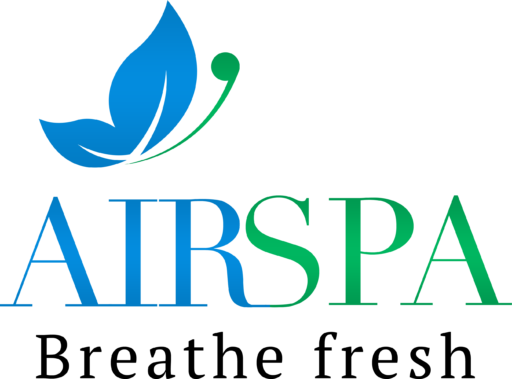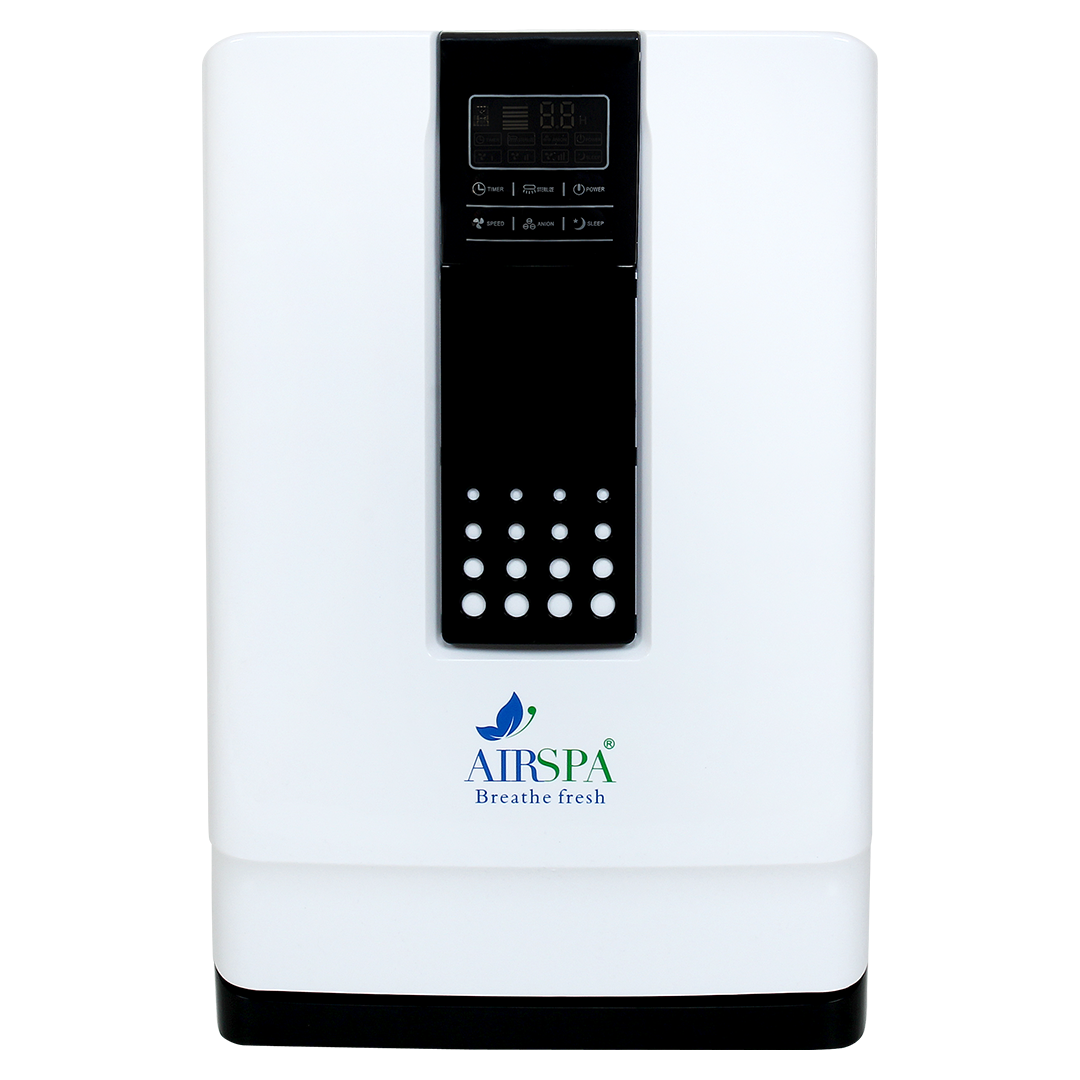FAQ
FAQ’s
No, our air purifiers are designed for easy setup and can typically be installed by following the included user manual. If you have any questions or need assistance, our customer support team is available to help.
You can securely make payments on our website using major credit cards, PayPal, or other accepted forms of electronic payment. Simply follow the checkout process for detailed instructions.
Airspa is committed to quality and customer satisfaction. Our products undergo rigorous testing to ensure they meet industry standards for performance and safety. Additionally, we offer a satisfaction guarantee to provide peace of mind with your purchase.
We provide a [number]-year warranty on all our air purifiers, covering defects in materials and workmanship under normal use conditions. For specific warranty details, please refer to the product documentation or contact our customer service team.
Yes, we offer a [number]-day return policy for our air purifiers. If you are not completely satisfied with your purchase, you may return it within [number] days for a refund or exchange. Please review our return policy for detailed terms and conditions.
Our customer support team is available [hours of operation] to assist you. You can reach us by phone at [phone number], via email at [email address], or through our website’s live chat feature. We’re here to help with any inquiries you may have about our products or services.
According to the Environmental Protection Agency (EPA), indoor pollutant levels may be two to five times higher than they are outdoors and occasionally even 100 times higher! Your home’s air can be affected by a variety of pollutants including pollen, mold, dust, dust mites, pet dander, and tobacco smoke, just to name a few. The EPA also reports that exposure to these indoor air pollutants can result in wide range of health effects, from immediate to long-term illnesses and mild to severe or even fatal symptoms.
Using an air purifier to remove impurities and deliver clean air to your home is a great solution for proactively minimizing your risk and exposure to indoor air pollution. However, there are tons of air purifiers on the market, so how do you pick the best one or even know what to look for? Start your search here by getting answers to the most common questions we receive about air purifiers.
This varies from air purifier to air purifier. Most of our air purifiers have 6 filters. For the majority of air purifiers, filters should be cleaned occasionally and changed every six to eight months for optimum results. However, some models feature permanent air filters that never need changing. Others have a combination of washable and replaceable air filters. To help maintain the life of your air purifier, many models include filter indicator lights. Read product descriptions and manufacturer literature to determine if the air purifier you are interested in has a filter indicator light.
The loudness of an air purifier (measured in decibels) depends on a few factors such as the model of air purifier, the fan operating speed, and personal noise tolerance. For example, air purifiers manufactured by AIRSPA are known to be much quieter overall than models from comparable brands. Most air purifiers feature multiple cleaning speeds. Thus, if your air purifier is operating at its maximum cleaning speed, it will be louder than if it is operating at a lower speed. Keep mind, however, that noise is subjective and what might be intolerable to you might not be as loud
Air purifiers are designed to fit a variety of spaces, from large to small. Make sure you look at the square footage of the room it will be primarily used in. Then consider your CFM and ACH needs. Most manufacturers will provide a suggested room size to receive the best results from that air
To assist with cleaning your air, air purifiers use air filters. There are three main types of air filters:
- HEPA Filters: High Efficiency Particulate Air (HEPA) filters remove 99.97% of particles that are 0.3 microns and larger from the air. This makes HEPA filters ideal for removing small pet dander particles, dust mite residue, and pollen from your air. HyperHEPA units, such as the IQAir HealthPro Compact, are certified to work even more effectively than traditional HEPA air purifiers.
- Carbon Filters: Using activated carbon, these filters remove odors and chemicals from your indoor air. These odors and chemicals include cigarette smoke, fireplace fumes, formaldehyde, volatile organic compounds (paint fumes, carpet glues, new building materials, etc.), pet odors, and kitchen odors.
- Pre-Filters: These filters are a great benefit because they help extend the time between filter cleanings or changes as well as maintain the air purifier’s functionality and efficiency. Pre-filters do this by trapping large particles before they reach the main filters of the air purifier.
We also offer a variety of replacement filters if your model needs a replacement.
Most air purifiers are designed to clean single rooms, so naturally, it’s best to place an air purifier in the room you spend the majority of your time in. For most people, this place is the bedroom. However, you may also spend a bulk of your hours in a home office or a living area with your family. Moreover, children may make frequent use of a dedicated play area. It’s beneficial to create clean air in these environments as well. You may want to consider purchasing an air purifier with caster wheels that allows you to easily move the unit from room to room to gain clean air anywhere that you spend your time.
This is another situation where the answer lies within the differences among air purifiers. Some are much more energy efficient than others. Our HEPA air purifiers typically consume 50 watts of electricity. To put this into perspective, a lamp uses approximately 60 watts and a computer uses 365 watts. Using an air purifier probably isn’t going to impact your electricity bill tremendously.
The EPA suggests monitoring your health effects after a change in your surroundings. For example, if you have new health problems after moving, remodeling, refurnishing, or a performing pesticide application, this could be an indicator of an indoor air quality problem. Consult your family physician. Another way is to identify potential sources of pollution, such as toxic household cleaning products, tobacco smoke, pets, pressed-wood products, combustible heaters, and many more. Also, identify areas of your home that may have poor ventilation. Look for smelly or stuffy air, condensation on walls or windows, or mold growth around your home.
Sylvane carries various allergen test kits to help you identify contamination from radon gas, allergens, mold, toxic mold, formaldehyde, dust mites, fiberglass, and organic vapors. If you are still unsure, contact your local health department to find professionals to help you solve and identify your indoor air quality problems.
Proper air filtration is crucial for homes of allergy- and asthma-sufferers, since allergy and asthma triggers can easily find their way into homes, despite your best attempts. Air purifiers that use HEPA filtration are the best choice for sufferers because they remove up to 99.97% of allergens up to 0.3 microns in size from your environment. All of these units feature multi-stage air filtration, which primarily includes a particle pre-filter, a HEPA filter, and a carbon filter. Browse more recommended air purifiers for these conditions on our air purifiers for allergies and air purifiers for asthma pages.
Additionally, asthma-sufferers should avoid using ionizing air purifiers because some models emit ozone, which can harm indoor air quality and aggravate asthma and other respiratory problems. The vast majority of ionic air purifiers produce little to no harmful ozone, making them safe for use in homes. However, it is a good rule of thumb for asthma-sufferers in particular to avoid using ionizers
With dirty or old air filters, your air might not be getting filtered thoroughly, resulting in poor air quality and increased risk for allergy, asthma, and other respiratory illness symptoms. To ensure that your air purifier is performing its best, clean air filters are crucial. Change them when indicated.
This acronym represents an important measurement for air purifiers. CADR stands for Clean Air Delivery Rate. This measurement was developed by the Association of Home Appliance Manufacturers. It indicates the volume of filtered air delivered by an air purifier. It is given in three measurements – one for pollen, one for tobacco smoke, and one for dust. The higher the CADR number, the faster the unit filters the air.
ACH stands for Air Changes per Hour. This indicates how frequently the air purifier filters or changes all of the air in a given space per hour. For example, an ACH rating of 6 means that all of the air in your room is thoroughly filtered six times per hour. We recommend an ACH of 5 or 6 for healthy indoor air. For individuals with allergies and asthma, an ACH rating of 6 or 8 is best.
CFM stands for cubic feet per minute. This measurement represents how many cubic feet of air move through the unit per minute. This is important when considering which air purifier is right for you. The higher the CFM, the better potential air purification results.
Keep in mind that CFM can be impacted by a variety of factors, including fan speeds, insulation, air flow in the room, furniture in the room, and the amount of pollutants in the air. However, there is an equation to help you determine an ideal CFM, which can provide help when deciding on air purifiers.
To find your ideal CFM, calculate the total volume of your space (length x width x height in cubic feet) and divide this number by your desired ACH.
Short for micrometer, a micron is one millionth of a meter and approximately 1/25,000th of an inch. Microns are used to measure airborne particle sizes. This is important because many harmful airborne particles are invisible to the naked eye, making them easily inhaled or distributed throughout your indoor environment. For example, dust mite allergens can be as small as 0.1 to 0.3 microns, which is considerably smaller than a single strand of human hair that typically measures 30 to 120 microns.
People use air purifiers for a wide range of reasons, from basic air cleaning to high volume allergen removal for allergy- and asthma-sufferers. There are air purifiers that remove smoke, pet dander, pollen, and even chemicals. For the most thorough particle filtration results, look for air purifiers with true HEPA filters. If you want to address odors and chemicals, look for models with carbon filters. To combat airborne germs, newer models are now being equipped with internal ultraviolet lights, in addition to traditional filters.
For best results, it is recommended to continuously run your air purifier. To help with noise and electricity costs, most air purifiers come with multiple cleaning speeds. For example, to maintain your indoor air quality while you are away from home, your air purifier can be on a lower setting than when you are home. This saves energy and cuts costs while still maintaining a clean environment
The simple answer is that they’re both right.
You can take two ozone generators (same make and model) and put them in two different locations (same square footage, etc.) In one location, the ozone may be nearly zero five feet from the ozone generator. But in the other location, the ozone smell may be overpowering.
Why the difference?
- The air in the room where no ozone can be detected had higher levels of pollution and/or odors, which are both destroying the ozone and being destroyed by the ozone.
- The air in the room where ozone can be detected had very little pollution and/or odors. Nothing to destroy the ozone. (And no need for ozone in a room like that!)
And that is why we also offer a few products that generate some ozone. They generate safe levels of ozone when used properly, for tougher odor reduction problems.
Too much ozone is certainly bad for you. Having said that, there are machines available that intentionally generate very large quantities of ozone (we sometimes use one here in our shop to eliminate occasional manufacturing odors), but if the level of ozone produced even from those machines is properly adjusted, the ozone and the odors in the air cancel each other out and little, if any, ozone remains. Those ozone generators probably put out millions or billions of times the amount of that our negative ion generators do.
- Ozone is unsurpassed for neutralizing stronger odors and pollutants. Even strong chemical odors, for people with multiple chemical sensitivities (also called multiple chemical intolerance, MCS or MCI). Around people, though, the level of ozone has to be controlled; see the note at the bottom of chart above.
- Ozone can be used to purify and sterilize water. It is replacing chlorine to disinfect water in wastewater treatment plants in many cities throughout the USA.
- Ozone can permanently remove tobacco smoke and mildew smell from cars. Ozone is used to sterilize items and areas.
- One thing people overlook about ozone ‘pollution’ in big cities: it is only present at harmful levels when man-made pollutants are there first. It is a scientifically proven and accepted fact that the ozone “pollution” in big cities is a product of hydrocarbon emissions (from cars and industrial pollution) and ultraviolet light from the sun. Although high levels of ozone are certainly not good for you to breathe, it is our firm belief that if sunlight did not produce ozone, then pollutants would built up until they killed many people (until they made cars and smokestack emissions illegal). In other words, the ozone destroys the pollution. Remember, you read it here first.
- We sometimes also run a large adjustable ozone generator besides the ionizers (to get rid of manufacturing odors in our shop, which bother an asthmatic staff member here).
This depends on multiple factors including the condition you want to treat, square footage, CADR rating, frequency of filter replacements, type of controls, and much more. Ultimately this choice is a personal one, which is why we supply you with the best information to make an informed decision when choosing an air purifier. If you are having trouble deciding among products or just need a few questions answered, give one of our knowledgeable sales consultants a call at 98-102-90130.
We know choosing an air purifier isn’t an easy decision. To learn more about air purifiers or not sure what’s best for you? We can take the guesswork out of decision-making. Call us at 98-102-90130. We want to help make your indoors healthy and comfortable.






